

What Is the Water Cycle?
Water can be found all over Earth in the ocean, on land and in the atmosphere. The water cycle is the path that all water follows as it moves around our planet.
Credit: NASA/JPL-Caltech Data source: NASA's Earth Observatory
On Earth, you can find water in all three states of matter: solid , liquid and gas . Liquid water is found in Earth’s oceans, rivers, lakes, streams—and even in the soil and underground. Solid ice is found in glaciers , snow, and at the North and South Poles . Water vapor—a gas—is found in Earth’s atmosphere.
How does water travel from a glacier to the ocean to a cloud? That’s where the water cycle comes in.
The Water Cycle
Credit: NASA/JPL-Caltech
The Sun’s heat causes glaciers and snow to melt into liquid water. This water goes into oceans, lakes and streams. Water from melting snow and ice also goes into the soil. There, it supplies water for plants and the groundwater that we drink.
Snow falling on a glacier during winter months usually replaces any water that melts away in the summer. However, due to Earth’s overall warming , most glaciers today are losing more ice than they regain, causing them to shrink over time.
How does water get into the atmosphere? There are two main ways this happens:
- Heat from the Sun causes water to evaporate from oceans, lakes and streams. Evaporation occurs when liquid water on Earth’s surface turns into water vapor in our atmosphere.
- Water from plants and trees also enters the atmosphere. This is called transpiration .
Warm water vapor rises up through Earth’s atmosphere. As the water vapor rises higher and higher, the cool air of the atmosphere causes the water vapor to turn back into liquid water, creating clouds. This process is called condensation .
When a cloud becomes full of liquid water, it falls from the sky as rain or snow—also known as precipitation . Rain and snow then fill lakes and streams, and the process starts all over again.
Clouds, like these over the savannah in Nairobi, Kenya, form when water vapor in the atmosphere condenses back into liquid water. Credit: Department of State
Why Do We Care About the Water Cycle?
We care about the water cycle because water is necessary for all living things. NASA satellites orbiting Earth right now are helping us to understand what is happening with water on our planet.

Water in the Soil
Humans need water to drink, and to water the plants that grow our food. NASA has a satellite called SMAP —short for Soil Moisture Active Passive —that measures how much water is in the top 2 inches (5 cm) of Earth’s soil . This can help us understand the relationship between water in the soil and severe weather conditions, such as droughts.
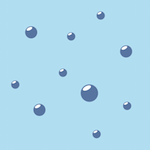
Water in the Atmosphere
NASA’s CloudSat mission studies water in our atmosphere in the form of clouds. CloudSat gathers information about clouds and how they play a role in Earth’s climate. Also, the international satellite called the Global Precipitation Measurement Mission (GPM) observes when, where and how much it rains and snows on Earth.

Water in the Oceans
As Earth’s climate becomes warmer, land ice at the North and South Poles starts melting. The water then flows into the ocean, causing sea level to rise. NASA’s Jason-3 mission—short for Joint Altimetry Satellite Oceanography Network-3 —orbits Earth collecting information about sea level and ocean temperature. This helps track how the ocean responds to Earth’s changing climate.
NASA is also tracking how Earth’s water moves all around our planet. This is the work of the GRACE-FO —or Gravity Recovery and Climate Experiment-Follow On —mission. It tracks the movement of water from one month to the next, and can even measure changes in deep groundwater hundreds of feet below Earth’s surface.
NASA’s Aqua satellite also collects a large amount of information about Earth’s water cycle, including water in the oceans, clouds, sea ice, land ice and snow cover.
Related NASA Missions
- Create new account
- Reset your password
Register and get FREE resources and activities
Ready to unlock all our resources?
Water and the water cycle
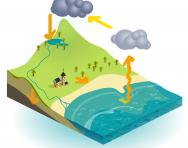
What is water and what is the water cycle?
Water is vital for all living things. Animals drink water, while plants take water up through their roots.
Water never leaves the Earth, it simply moves around the ‘water cycle’. The water cycle follows the journey of water from oceans to clouds to rain to streams to rivers and back into the ocean. The water cycle involves the scientific processes of evaporation and condensation and is also known as the hydrologic cycle ('hydro’ means water in Greek).
Top 10 facts
- The water cycle is essential to life on our planet: without it there would be no plants or animals. Desert habitats , with little rain, are much more barren than other areas of the world.
- Humans are made up of about 75% water.
- The water cycle is powered by the Sun: heat makes water evaporate, before it cools and condenses and falls back to the ground.
- Water can exist in three forms: liquid (water), solid (ice) or gas (water vapour).
- Around two thirds of the world's water is in polar ice caps and glaciers.
- About 70% of he Earth is covered in water. An incredible 97% of Earth's water is in the oceans (this is salty water) and 2% is in the ice caps, leaving only 1% available for us to drink.
- There are underground reservoirs called aquifers. Some water in the ground may stay there for thousands of years.
- You might be drinking water that dinosaurs drank! Because water is recycled and doesn’t leave the Earth or is formed all the water currently on our planet is the same water that has been there for millions of years.
- The Nile is 4132 mile long, making it the longest river in the world.
- Water can be used to create electricity through a hydro-electric power station.
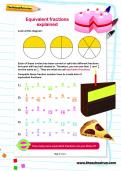
Boost Your Child's Learning Today!
- Let us create a tailored plan for your child
- English & maths resources added each week to your plan
- Watch your child leap ahead in their learning & confidence
Did you know?
- Water leaving your body as urine or sweat is evaporated and recycled through the water cycle. The water in your wee and sweat is returned to the water cycle, while other parts (urea and salt for example) are left behind as they do not evaporate with the water.
- Beneath the ground is a water table. This is the level where the ground is saturated with water; the water table can rise or fall depending on the amount of rain that falls.
- When the ground becomes saturated with water it can cause flooding. The water that falls as rain no longer has anywhere to go as the ground is full of water so it stays on top. Many rivers and streams swell with water when this happens and can break their banks and flood as well.
- Frozen water can move and carve out valleys in the form of glaciers. Some of the ice in glaciers has been there for thousands of years and will only re-enter the water cycle is the ice melts.
- Hydroelectric power stations use the force of falling water to generate electricity. They are formed of a reservoir that is high up in a mountainous area, with the generators down below. Water is released and the kinetic energy in it is transformed into electrical energy.
- The longest someone can survive without water is about three days. We need water for lots of jobs in our bodies, such as digesting food. Water is also found in our immune systems and makes up a large part of our blood. Without water our bodies would stop working.
- Drinking water needs to be clean to prevent people from getting diseases. In the UK we have water treatment plants that remove all of the pollutants in water before it can become drinking water. The water has chemicals added to it and is filtered. Formal water treatments to create drinking water have only really been around for the past 100 years or so.
Look through the gallery below and see if you can spot the following:
- Water cycle diagram
- Transpiration
- Types of precipitation
- Water evaporating and leaving salt
- A droplet falling into water
- Ice in the Antarctic
- A glacier in a valley
- Hot springs
- Snow flakes
- Ladybower Reservoir in the Upper Derwent Valley in the Peak District National Park
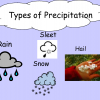
Water is vital for life and humans need to drink it regularly to make sure we have enough in our bodies. When we don’t have enough water in our bodies it is called dehydration.
There are many places that water can be found. We call these ‘bodies of water’. Bodies of water include: oceans, seas, streams, rivers , lakes, ponds, wetlands, marshes, bays, harbours, coves, deltas, and even puddles! There are generally considered to be five main oceans: Pacific, Atlantic, Indian, Southern and Arctic.
Water is never created or destroyed; it simply journeys through the water cycle being recycled each time. The water that we use today has been around for millions of years and the movement of water around our planet is vital to support life on Earth.
The water cycle takes water on a journey and is made up of six possible processes: condensation, infiltration, runoff, evaporation, precipitation, transpiration.
The heat from the sun causes water to turn into a gas known as water vapour. This process is called evaporation. When the sun turns water from plants and trees into water vapour the process is called transpiration.
When water cools down it forms a cloud. This process is called condensation. When a cloud becomes too heavy the water falls to the ground as precipitation. Precipitation can either take the form of rain, sleet, hail or snow.
When precipitation lands on the ground it seeps into the ground or runs off into drains and water ways. It ends up in streams and rivers and eventually returns to the oceans.
Not all water falls into streams, oceans and rivers. A lot of water is locked up in the polar ice caps.
There is evidence that the polar ice caps are gradually melting due to global warming. This will eventually cause the sea level to rise.
Words to know:
Water vapour – water in a gas form Ice – water in a solid form Ice cap – a large area (less than 50, 000km²) that is covered in ice. Condensation – the process of cooling water that turns it from a gas (water vapour) back into a liquid Infiltration – when water moves down through the ground Runoff – when water travels over the top of the ground and back into a stream, river or sea Evaporation – the process of heating water that turns it from a liquid into a gas (water vapour) Precipitation – water falling to the ground from a cloud. It can be in the form of rain, sleet, hail or snow. Transpiration – the process of water evaporating out of the leaf of a plant or tree. Ocean – a very large area of sea. There are usually considered to be five main oceans (Pacific, Atlantic, Indian, Southern and Artic. River – A flow of water that leads to the sea. A river is a larger flow of water than a stream. Stream - A flow of water that usually leads into a river. A stream is a smaller flow of water than a river. Aquifer – an underground reservoir of water Reservoir – an area where water is stored Cloud – condensed water (water vapour) that is visible in the atmosphere Hydropower – the method of changing the kinetic energy from falling water into electrical energy.
Related Videos
Just for fun...
- Play the Natural Water Cycle game
- Download a water cycle colouring-in sheet
- Join Molly on the Journey of Water : try a water cyle interactive activity in the Severn Trent Education Zone (there are water activity sheets to complete, too)
- Make your own 3D model of the water cycle
- The Brainpop Water Cycle interactive game
- Nine online water cycle games to play
- Try your hand at running a city's water cycle and see how long it takes you to get the water from the reservoir to the ocean in an online game
Best books about the water cycle for kids
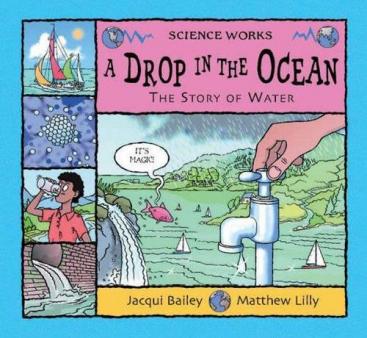
Find out more
- What is the water cycle ? Watch a BBC Bitesize animation, an introductory guide for KS1 and KS2 students
- A complete introduction to the water cycle
- Find out more about all aspects of water , from glaciers to saline water and hydroelectricity
- Read the Met Office's kids' information about the water cycle
- Discover how electricity is formed at hydroelectric power stations
- Print out a child-friendly water cycle diagram from the U.S. Geological Survey and the Food and Agriculture Organization of the United Nations
- Steve Backshall follows the journey of water around the water cycle, from a rainy hilltop in Derbyshire to the North Sea
- The water cycle : the way Earth has been recycling water for over 4 billion years!
- NASA Kids water cycle information
- Download TheSchoolRun's water cycle worksheets: The water cycle , Make your own water cycle and Complete the water cycle
- A water cycle diagram available in beginner, intermediate or advanced levels of detail
- Download a water cycle factsheet
See for yourself
- Make a mini water cycle in a bowl: step-by-step instructions
- See the water cycle in motion , step by step
- Watch a BBC clip on how water is treated in the UK before it is returned to the water cycle
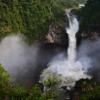
Give your child a headstart
- FREE articles & expert information
- FREE resources & activities
- FREE homework help
If you're seeing this message, it means we're having trouble loading external resources on our website.
If you're behind a web filter, please make sure that the domains *.kastatic.org and *.kasandbox.org are unblocked.
To log in and use all the features of Khan Academy, please enable JavaScript in your browser.
Middle school Earth and space science
Course: middle school earth and space science > unit 3.
- The water cycle
Understand: the water cycle
- (Choice A) transpiration A transpiration
- (Choice B) evaporation B evaporation
- (Choice C) precipitation C precipitation

Lanternfish ESL
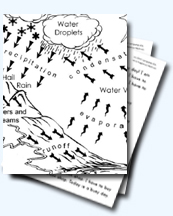
document.write(Title);
The water cycle is the movement of water throughout the earth due to the processes of evaportation, condensation, precipitation, and runoff. The worksheets below help reinforce this vocabulary.
Worksheet 1: Water Cycle Diagram (Without Explanation)
A diagram that demonstrates the processes of the water cycle such as precipitation and condensation.
Worksheet 2: Water Cycle Diagram (With Explanation)
A diagram that demonstrates the processes of the water cycle such as precipitation and evaportation.
Worksheet 3: Water Cycle Crossword
A crossword with clues covering the basic concepts of the water cycle.
Worksheet 4: Water Cycle Word Search
A word search that covers the key concepts of the water cycle.
Worksheet 5: Water Cycle Cloze Activity
An intermediate cloze activity to review vocabulary and concepts of the water cycle.
Related Unit: Bodies of Water
A collection of worksheets on the theme of bodies of water such as oceans and lakes.

Related Unit: Rivers
A collection of worksheets on the theme of rivers.
Information on the Water Cycle
The Water Cycle (also known as the hydrologic cycle) is the journey water takes as it circulates from the land to the sky and back again.
Interactive Game Can you put all the labels in the right places?
The story of the Water Cycle
Why do we need the water cycle?
The Earth is covered by water, however, almost 97% is salt water found in the oceans. We can not drink salt water or use it for crops because of the salt content. We can remove salt from ocean water, but the process is very expensive.
How many processes make up the water cycle?
There are six important processes that make up the water cycle.
Condensation - the opposite of evaporation. Condensation occurs when a gas is changed into a liquid.
Infiltration - Infiltration is an important process where rain water soaks into the ground, through the soil and underlying rock layers.
Runoff - Much of the water that returns to Earth as precipitation runs off the surface of the land, and flows down hill into streams, rivers, ponds and lakes.
Evaporation - the process where a liquid, in this case water, changes from its liquid state to a gaseous state.
Precipitation - When the temperature and atmospheric pressure are right, the small droplets of water in clouds form larger droplets and precipitation occurs. The raindrops fall to Earth.
Transpiration - As plants absorb water from the soil, the water moves from the roots through the stems to the leaves. Once the water reaches the leaves, some of it evaporates from the leaves, adding to the amount of water vapor in the air. This process of evaporation through plant leaves is called transpiration.
©Copyright Mandy Barrow 2013 primaryhomeworkhelp.com
Follow me on Twitter @mbarrow
I teach computers at The Granville School and St. John's Primary School in Sevenoaks Kent.

Water Cycle
Water Cycle introduces students to the continuous process water follows from evaporation to precipitation. Students will learn many terms related to the water cycle and be able to explain the process to others correctly. They will be able to recognize the different steps and put them in order.
In the “Options for Lesson” section of the worksheet, you will see some suggestions for additional or alternative things to do for the lesson. One suggestion is to have students work in pairs throughout the lesson as they learn about the water cycle. You could also have students present their 2D water cycle models to the class.
Description
Additional information, what our water cycle lesson plan includes.
Lesson Objectives and Overview: Water Cycle teaches students how water flows through a continuous process from evaporation to precipitation. Students will learn and be able to define the terms that relate to the steps of this process. By the end of the lesson, they will be able to explain the process to others correctly. This lesson is for students in 4th grade, 5th grade, and 6th grade.
Classroom Procedure
Every lesson plan provides you with a classroom procedure page that outlines a step-by-step guide to follow. You do not have to follow the guide exactly. The guide helps you organize the lesson and details when to hand out worksheets. It also lists information in the yellow box that you might find useful. You will find the lesson objectives, state standards, and number of class sessions the lesson should take to complete in this area. In addition, it describes the supplies you will need as well as what and how you need to prepare beforehand. For this lesson, you will need to supply plastic cups, water, ice cubes, paper towels, construction paper, markers, glue, and other supplies that students may need to make a 2D model of the water cycle. Before giving the lesson, you will also need to gather the plastic cups and fill them with water about 3/4 of the way.
Options for Lesson
There are several suggestions in the “Options for Lesson” section that you could incorporate into the lesson if you have time or want to extend or adjust parts of the lesson. Several of these options relate specifically to the task of creating a 2D model. You may want students to work in pairs throughout the lesson, or just for the 2D model portion. Another idea is to let students present their models to the class. As an alternative idea, students could use PowerPoint or another slide deck software to present models of the water cycle.
Teacher Notes
The paragraph on the teacher notes page provides a little extra information for the lesson as you prepare. It suggests including hands-on activities whenever possible, such as showing a how a plant transpires over a period of time. You can use the blank lines on this page to write down ideas or thoughts you have as you read through the lesson document.
WATER CYCLE LESSON PLAN CONTENT PAGES
The water cycle.
The Water Cycle lesson plan contains two pages of content. The first page describes how the water people drink today could be millions of years old. The reason for this phenomenon is that the water on the Earth that everyone and everything uses has existed since the beginning of time. For instance, the rain falling from the sky may one day be the water we drink a few weeks later. This is possible because of the water cycle, which basically recycles water in a continuous cycle.
The lesson provides a diagram that roughly shows the different steps of the cycle. It shows clouds with falling rain and snow over some mountains. Rivers flow down from the mountain tops and into a lake or ocean. It also displays how water on the ground seeps through the Earth’s surface and eventually deposits into surface water sources, such as the ocean.
To illustrate evaporation, the diagram shows white circles in the air with arrows and a label signifying the upward direction. It does not outline the cycle exactly. Instead, it provides arrows to represent that snow and rain fall down, groundwater flows into a water source, and water vapor rises into the atmosphere.
Steps of the Cycle
Below the diagram, the lesson explains the four steps of the water cycle in detail. The first step is evaporation. Evaporation occurs when the sun heats up the waters of oceans, lakes, and other bodies of water. The heat turns the water into a gas, also called water vapor. The vapor then rises into the air (evaporates). This process doesn’t just happen for large bodies of water. Students will learn that even an open container of water inside a house will eventually evaporate.
Transpiration is the next step. It is the process by which plants lose water in the form of water vapor. It is similar to evaporation because it also moves water vapor into the air, except that the source is plants instead of water bodies. Transpiration occurs continuously as plants grow and use up the water that passes through the roots, later releasing it into the air again.
Students will then learn about condensation, the third step of the cycle. Condensation occurs when water vapor in the air gets cold and changes back into a liquid. Clouds actually form during condensation, and when they fill up too much with the moisture in the atmosphere, it rains. One example of how condensation works is what happens to a bathroom mirror after a hot shower. The steam (water vapor) from the shower is hot, but when it touches the cool mirror, it becomes liquid again. As a result, the mirror looks hazy from the moisture.
The last step is precipitation, which involves rain, snow, sleet, or hail falling to the ground from the clouds. It occurs when the air can no longer hold the water that has evaporated. The clouds are too heavy with moisture, so the evaporated water falls back to the Earth as precipitation.
After Precipitation
After it rains or water returns to Earth in another form during precipitation, it becomes ground water. Ground water is what plants and animals use for drinking. It can also be stored in aquifers, which are underground layers of rock that get saturated with water. That water can return to the surface through natural springs. In addition, people can pump the water to the surface.
When there is a large amount of precipitation, it runs over the soil and collects in oceans, lakes, or rivers. This excess water from storms, meltwater, or other sources is called runoff. In other words, runoff is the water that remains on the Earth’s surface rather than absorbing into the soil. The water from runoff evaporates, starting the whole cycle over again.
A fun fact that students will also learn is that sweating is an example of condensation in action. When the moisture drips off the skin, it is essentially like precipitation. The sweat begins to dry due to evaporation. However, since people aren’t plants, the body does not transpire. Instead, they perspire, which occurs when moisture escapes into the air. That means that the water a person sweats could some day become the water they drink!
The lesson provides another diagram that shows how plants transpire. The roots of the plant absorb water from the soil and into the root hairs. The water then travels through the plant’s stem and leaves. After it begins to transpire, the water starts to evaporate from the surface of the leaves and into the atmosphere once more.
Here is a list of the vocabulary words students will learn in this lesson plan:
- Evaporation: the process by which water returns to the atmosphere
- Transpiration: the process by which plants lose water in the form of water vapor
- Condensation: the process by which water vapor in the air becomes cold and changes back to a liquid
- Precipitation: the process by which water falls to the ground in the form of rain, snow, sleet, or hail
- Ground water: the water that soaks into the surface of the Earth after it rains, snows, or hails
- Aquifer: an underground layer of rock that saturates with water that can reach the surface again through natural springs or by pumping
- Runoff: the flow of excess water from storms, meltwater, or other sources that remains on the Earth’s surface
WATER CYCLE LESSON PLAN WORKSHEETS
The Water Cycle lesson plan includes three worksheets: a journal page, a rubric, and a homework assignment. The guidelines on the classroom procedure page describe when to hand out each assignment to the class.
OBJECT LESSON JOURNAL PAGE
You will use the journal pages before you distribute any of the content pages. The classroom procedure lists the steps to follow for an object lesson. The journal page is for students to answer questions that relate to the things they observe as you go through the object lesson. The classroom procedure page also provides you with the list of questions to ask. Students will write the questions you ask them in the boxes on the worksheet and write in their answers. There are a total of 10 questions.
2D MODEL RUBRIC PAGE
As part of the classroom procedure, students will create a 2D model of the water cycle. They will need to include labels, arrows, and other information so that it is clear for viewers to understand. The rubric page shows students what you will assess them on. For instance, does their model show all the steps of the cycle? Did students label the model correctly? Does the model clearly show multiple types of perspiration? There is space near the bottom of the rubric for you to provide comments.
WATER CYCLE HOMEWORK ASSIGNMENT
For the homework assignment, students will complete a crossword puzzle. There are a total of 20 terms and clues for them to figure out.
Worksheet Answer Keys
The last page of this document is an answer key for the homework assignment. If you choose to administer the lesson pages to your students via PDF, you will need to save a new file that omits this page. Otherwise, you can simply print out the applicable pages and keep this as reference for yourself when grading assignments.
Thank you for submitting a review!
Your input is very much appreciated. Share it with your friends so they can enjoy it too!
Perfect lesson plan!
It's a great lesson plan I can use for my students anytime! :) Better than expected. Thanks for making it.
Excellent!!
Amazing, my students enjoy the lesson.
Water cycle review....Excellent
Beautiful and easy, my student enjoyed the class and it was easier for me to explain
Preliminary Review
I really like the videos on water, but I need to test them out with my elementary school teachers in our Trout in the Classroom Program.
This review of the water cycle served as an excellent source to differentiate my reading levels for my students and still provided quality content. Thanks so much for all you do, Clarendon Learning!
Related products

Careers: Computer Programmer

Careers: Robotics Engineer
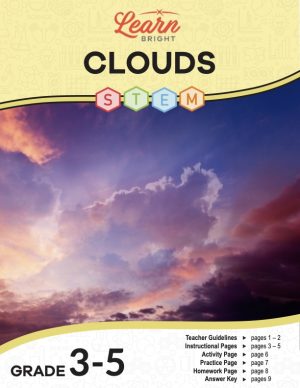
Clouds STEM

Careers: Robotics Technician
Make your life easier with our lesson plans, stay up-to-date with new lessons.

- Lesson Plans
- For Teachers
© 2024 Learn Bright. All rights reserved. Terms and Conditions. Privacy Policy.
- Sign Up for Free
- Biology Article
Diagram Of Water Cycle
Table of Contents
What is the Water Cycle?
Stages of water cycle.
Water is a precious natural resource of our planet earth. It cannot be created or destroyed. The water on the earth today is the same water that existed thousands of years ago and will continue to exist years in the future.
The water cycle is an important Biogeochemical Cycle involved in the flow or circulation of water through different levels of the ecosystem. The water cycle is defined as a natural process of constantly recycling the water in the atmosphere. It is also known as the hydrological cycle or the hydrologic cycle.
During the process of the water cycle between the earth and the atmosphere, water changes into three states of matter – solid, liquid and gas.
The diagram of the water cycle is useful for both Class 9 and 10. It is one of the few important topics which are repetitively asked in the board examinations. Below is a well labelled and easy diagram of water cycle for your better understanding.
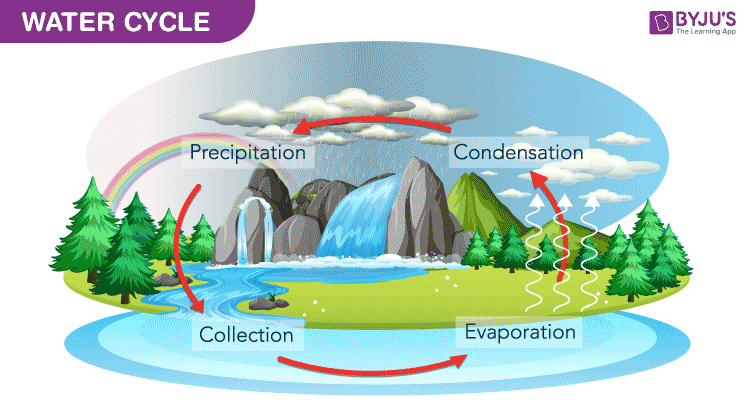
The complete water cycle is carried into four stages which are as follows: Evaporation, Condensation, Precipitation and Collection.
Evaporation
This is the initial stage of the water cycle.
The process by which water from its liquid state changes to vapour, a gaseous state, is termed as evaporation. During the water cycle, water in the water bodies get heated up and evaporates in the form of vapour, mixes with the air and disappears.
Condensation
When the evaporated water vapour loses its thermal energy, it becomes liquid through the process of condensation. Formation of clouds are examples of condensation.
Precipitation
Rain, snow, sleet, or hail are all examples of Precipitation. After the condensation, atmospheric water vapour forms sufficiently large water droplets and falls back to the earth with the help of gravity.
Deposition or Collection
This is the final stage of the water cycle. Deposition occurs when evaporated water vapour falls back to earth as precipitation. This water may fall back into the different water bodies, including oceans, rivers, ponds, lakes and even end up on the land, which in turn becomes a part of the groundwater.
Overall, the water cycle process describes how water is balanced in the atmosphere. It also plays an important role in ensuring the availability of water for all living organisms and also it has a great impact on our environment .
For more information about Water Cycle, its steps, facts and other related topics, visit us at BYJU’S Biology.
Leave a Comment Cancel reply
Your Mobile number and Email id will not be published. Required fields are marked *
Request OTP on Voice Call
Post My Comment
Thanks for your help
Thanks for your help Byjus always helps my children to understand thank u very much
Thank you! This helped so much!
Thanks a lot! This helped in my project!
It’s very helpful
Register with BYJU'S & Download Free PDFs
Register with byju's & watch live videos.

IMAGES
VIDEO
COMMENTS
Water is a polar solvent because the covalent bonds in water molecules are nonpolar. View Answer. Water is used in an equilibrium stage to dissolve 1,350 kg/h of Na_2CO_3 from 3,750 kg/h of a solid, where the balance is an insoluble oxide. If 4,000 kg/h of water is used and the underflow is 40... View Answer.
The worksheets include atmospheric currents and the movement of water through its various forms. We follow the H 2 O as the sun heats it and leaves the ground through the process of evaporation and at the same time plants are transpiring as a result of photosynthesis and giving off their own vapor. The H 2 O rises up and condenses into clouds.
The water cycle is the path that all water follows as it moves around Earth in different states. Liquid water is found in oceans, rivers, lakes—and even underground. Solid ice is found in glaciers, snow, and at the North and South Poles. Water vapor—a gas—is found in Earth's atmosphere. Water can be found all over Earth in the ocean, on ...
The water cycle. The water cycle, or hydrologic cycle, is driven by the Sun's energy. The sun warms the ocean surface and other surface water, causing liquid water to evaporate and ice to sublime—turn directly from a solid to a gas. These sun-driven processes move water into the atmosphere in the form of water vapor.
Humans are made up of about 75% water. The water cycle is powered by the Sun: heat makes water evaporate, before it cools and condenses and falls back to the ground. Water can exist in three forms: liquid (water), solid (ice) or gas (water vapour). Around two thirds of the world's water is in polar ice caps and glaciers.
The water cycle is a fascinating process that involves the movement of water between different states and locations on Earth. In this article, you will learn how the water cycle works, what factors influence it, and how it affects weather and climate. This article is designed for middle school students who want to explore the science of Earth and space. Khan Academy is a nonprofit organization ...
Understand: the water cycle. Which two water cycle processes return water to the atmosphere? Learn for free about math, art, computer programming, economics, physics, chemistry, biology, medicine, finance, history, and more. Khan Academy is a nonprofit with the mission of providing a free, world-class education for anyone, anywhere.
Get comprehensive homework help for The Water Cycle! Browse through questions students have asked on The Water Cycle and see how Flexi helped them with answers and clear explanation. ... The water cycle is the movement of water through the oceans, atmosphere, land, and living things.
The water cycle takes place on, above, and below Earth's surface. In the cycle, water occurs as water vapor, liquid water, and ice. Describe one way you could go through the water cycle, starting with the water vapor in the air as a starting point. Name an process by which water changes from a solid or liquid molecule to a gas.
Get comprehensive homework help for Water Cycle! Browse through questions students have asked on Water Cycle and see how Flexi helped them with answers and clear explanation. Flexi Homework Help Q&A. Water Cycle. Succession. Carbon Cycle. All Subjects; Life Science; Water Cycle; Summary: Water and other chemical elements are constantly being ...
Water Cycle Activities and Worksheets. This informative guide is full of facts and information about the water cycle, to give children help with their homework on this important Geography topic. Make a rain cloud in a jar! Sing this water cycle song. Make a model of the water cycle in a bag. Follow these instructions to make your own rain gauge ...
1. Hand out the Water Cycle Capture Sheet. Students will use this throughout the rest of the lesson. 2. Show the water cycle video (slide 5). Students should be labeling their blank diagrams as they watch. This version of the water cycle is more complex than the one on their capture sheets. Students only need to copy the terms from the word bank.
Water is present on Earth in three states: gas, liquid, and solid. The amount of water on the planet and in its atmosphere remains the same, but it moves around constantly in these three states. The way water moves around Earth is called the water cycle.
Water Cycle Worksheets and Activities. This unit features worksheets and other resources for teaching the water cycle. The water cycle is the movement of water throughout the earth due to the processes of evaportation, condensation, precipitation, and runoff. The worksheets below help reinforce this vocabulary.
A water particle within the cycle never disappears, it just moves around the cycle changing form. This is how the water cycle works: The sun heats up water, changing it from water to water vapour which evaporates. As air rises, it cools. The water vapour will cool and condense to form water droplets and clouds.
This water cycle worksheet is a great learning resource for Geography lessons. After adding eight labels to the correct place on a coloured diagram of the water cycle, students are asked to write a paragraph explaining the water cycle in your own words. They are given a short prompt of a few words to help them begin writing this.This water cycle worksheet is a lovely way to teach your students ...
hydrothermal vents. underwater volcanoes erupting. What are the salts in the ocean? chloride, sodium and sulfate. Study with Quizlet and memorize flashcards containing terms like What is the breakdown of all the water on Earth?, What is an aquifer? How does the water get there?, What is the water cycle? and more.
There are six important processes that make up the water cycle. Condensation - the opposite of evaporation. Condensation occurs when a gas is changed into a liquid. Infiltration - Infiltration is an important process where rain water soaks into the ground, through the soil and underlying rock layers. Runoff - Much of the water that returns to ...
The journal page is for students to answer questions that relate to the things they observe as you go through the object lesson. The classroom procedure page also provides you with the list of questions to ask. ... WATER CYCLE HOMEWORK ASSIGNMENT. For the homework assignment, students will complete a crossword puzzle. There are a total of 20 ...
This is part of a 16-Episode Bundle:Bill Nye EARTH SCIENCE Part 2 BUNDLE (SAVE 35%)This is a PowerPoint presentation, video guide worksheet/quiz, and KWL chart for:Bill Nye the Sc
This Homework assignment has 7 pages of critical thinking questions on the topic of The Water Cycle and Climates. A Teacher Answer Key (Guide) is included. A free product preview of the entire homework assignment is available below. A PowerPoint Presentation and Notes Outline on this topic can be purchased separately.
From that we build our cities near water sources and filter it to use it. Gizmo Warm-up Water on Earth is always in motion. These motions form a repeating circuit called the water cycle. The Water Cycle Gizmo allows you to explore the different paths water takes as it moves from Earth's surface to the atmosphere and back. Click Oceans.
The complete water cycle is carried into four stages which are as follows: Evaporation, Condensation, Precipitation and Collection. Evaporation. This is the initial stage of the water cycle. The process by which water from its liquid state changes to vapour, a gaseous state, is termed as evaporation. During the water cycle, water in the water ...
An ideal reheat Rankine cycle with water as the working fluid operates the inlet of the highpressure turbine at 7 0 0 0 kPa and 4 5 0 ° C, the inlet of the low - pressure turbine at 6 0 0 kPa and 5 0 0 ° C, and the condenser at 1 5 kPa. Determine the mass flow rate through the boiler needed for this system to produce a net 5 0 0 0 k W ...